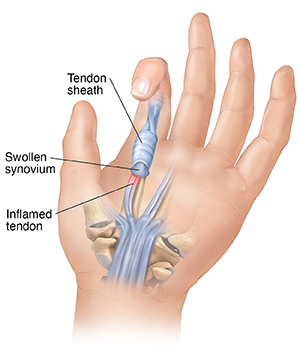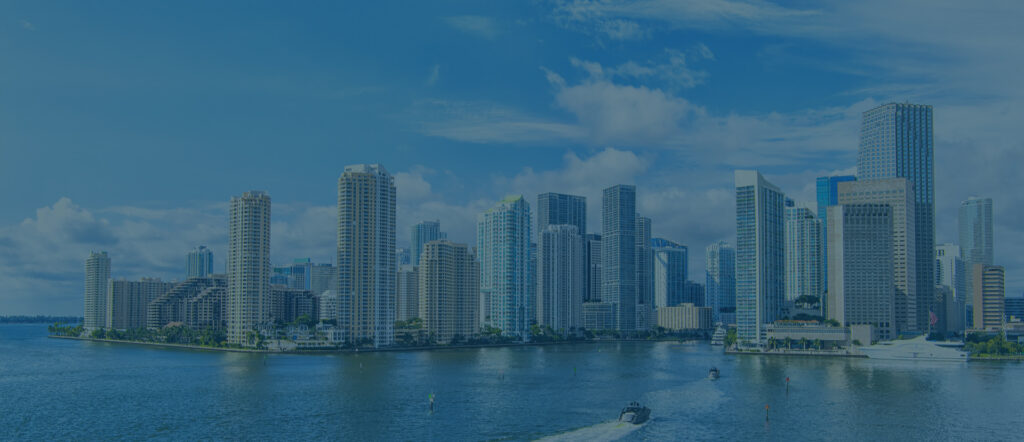Trigger finger is a condition that affects the tendons in your fingers or thumb. It can limit finger movement. When you try to straighten your finger, it may lock or catch before popping straight out.
Anatomy
Tendons are tissues that connect muscles to bone. When muscles contract, tendons pull on bones. This is what causes some parts of the body to move. The muscles that move the fingers and thumb are located in the forearm, above the wrist. Long tendons – called the flexor tendons – extend from the muscles through the wrist and attach to the small bones of the fingers and thumb. When you bend or straighten your finger, the flexor tendon slides through a snug tunnel, called the tendon sheath, which keeps the tendon in place next to the bones.
Cause
The cause of trigger finger is usually unknown. There are factors that put people at greater risk for developing it.
- Trigger fingers are more common in women than men
- They occur most frequently in people who are between the ages of 40 and 60 years
- Trigger fingers are more common in people with certain medical problems, such as diabetes and rheumatoid
arthritis - Trigger fingers may occur after activities that strain the hand
Description
The flexor tendon can become irritated as it slides through the tendon sheath tunnel. As it becomes more and more irritated, the tendon may thicken and nodules may form, making its passage through the tunnel more difficult. The tendon sheath may also thicken, causing the opening of the tunnel to become smaller. If you have trigger finger, the tendon may become momentarily stuck at the mouth of the tendon sheath tunnel when you try to straighten your finger. You might feel a pop as the tendon slips through the tight area, and your finger will suddenly shoot straight out.

Symptoms
Symptoms of trigger finger usually start without injury, although they may follow a period of heavy hand use. One or more fingers may be affected. Symptoms may include:
- A tender lump in your palm
- Swelling
- Catching or popping sensation in your finger or thumb joints
- Pain when bending or straightening your finger
Stiffness or catching tends to be worse after inactivity, such as when you wake up in the morning. Your fingers will often
loosen up as you move them.
Physical Examination
Your healthcare provider can diagnose the problem by talking with you and examining your hand. No other testing is usually necessary to diagnose trigger finger.
Nonsurgical Treatment
Rest
If symptoms are mild, resting the finger may be enough to resolve the problem.
Medications
Over-the-counter medications, such as non-steroidal anti-inflammatory medications (NSAIDs) or acetaminophen can be used to relieve the pain.
Steroid Injections
Your healthcare provider may choose to inject a corticosteroid – a powerful anti-inflammatory medication – around the irritated tendon. In some cases, this improves the problem only temporarily, and another injection is needed. If two injections fail to resolve the problem, surgery should be considered.
Injections are less likely to provide permanent relief if you have had the triggering for a long time, or if you have an associated medical problem, like diabetes.
Surgical Treatment
Trigger finger is not a dangerous condition. The decision to have surgery is a personal one, based on how severe your symptoms are and whether nonsurgical options have failed. In addition, if your finger is stuck in a bent position, your healthcare provider may recommend surgery to prevent permanent stiffness.
Surgical procedure
The goal of surgery is to widen the opening of the tunnel so that the tendon can slide through it more easily. This is done on an outpatient basis, meaning you will not need to stay overnight at the hospital.
An injection of local anesthesia to numb the hand is given for the procedure. The surgery is performed through a small incision in the palm or sometimes with the tip of a needle. The tendon sheath tunnel is cut. When it heals back together, the sheath is looser and the tendon has more room to move through it.

Complications
Although not common, the possible complications include:
- Incomplete extension: due to persistent tightness of the tendon sheath beyond the part that was released
- Persistent triggering: due to incomplete release of the first part of the sheath
- Bowstringing: due to excessive release of the sheaththumb joints
- Infection
Recovery
Patients are able, and encouraged, to move their fingers immediately after surgery. It is common to have some soreness in your palm. Frequently raising your hand above your heart can help reduce swelling and pain.
Please call (305) 227-4263 to request an appointment with Dr. Alejandro Badia.






